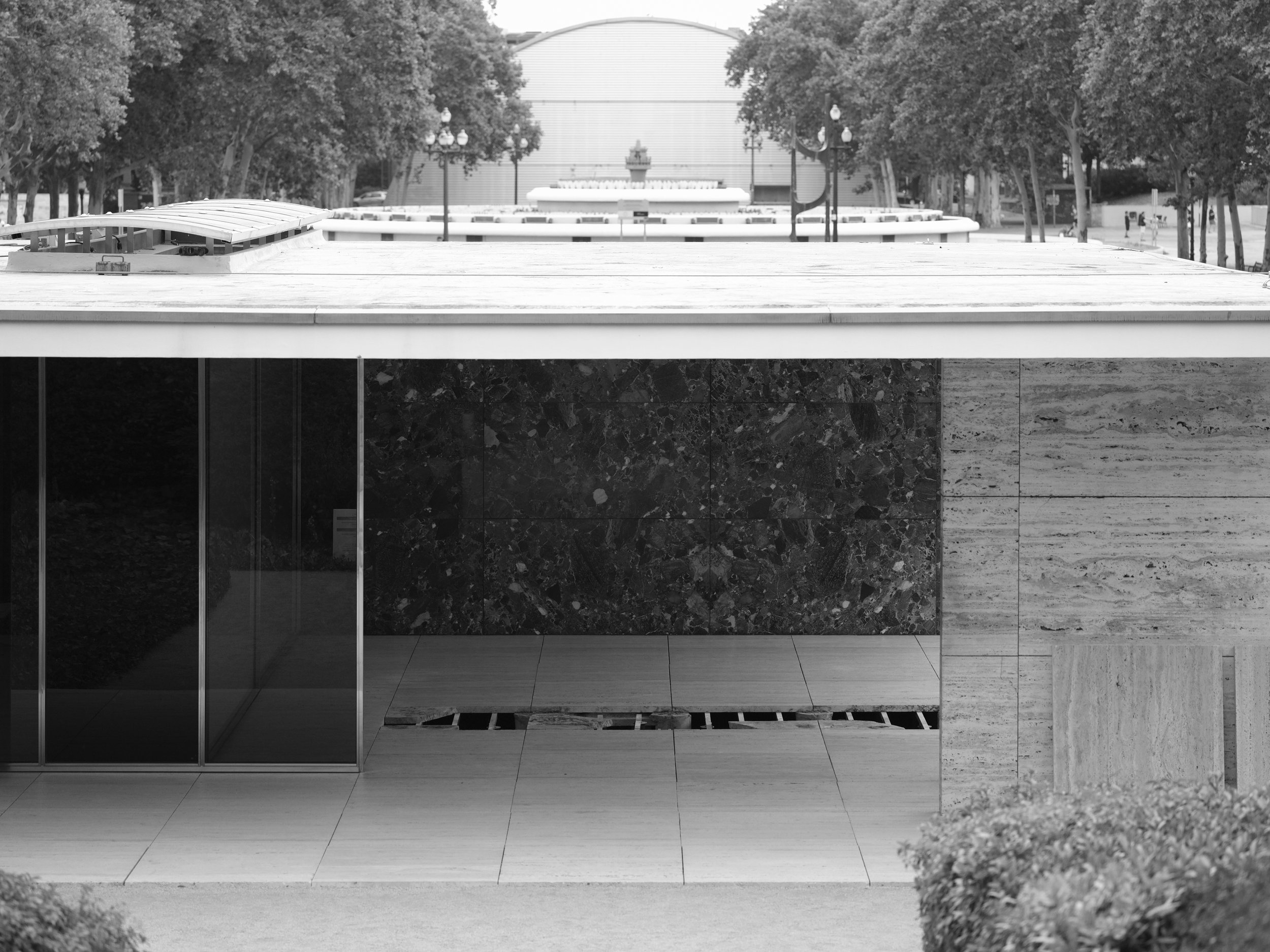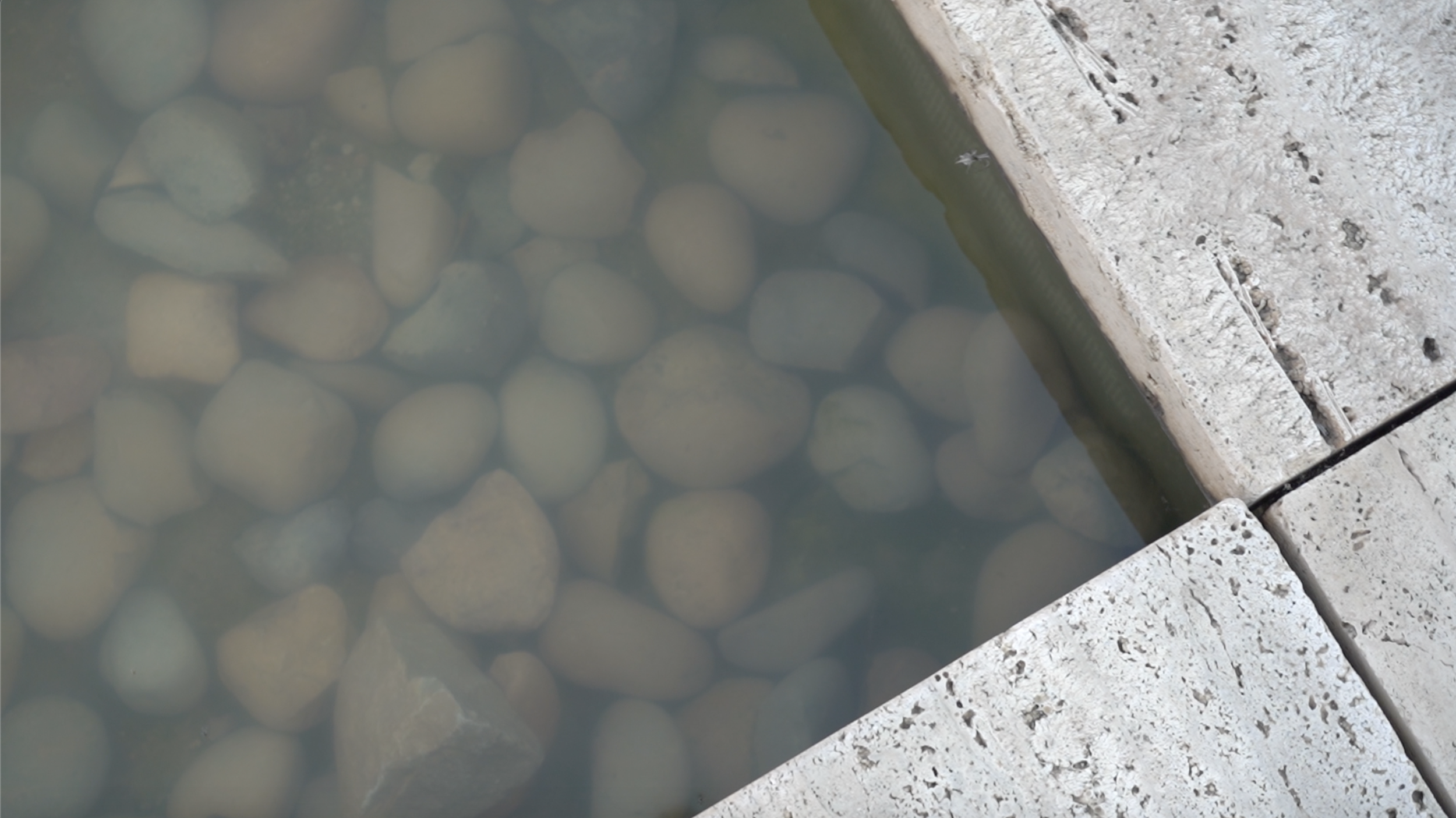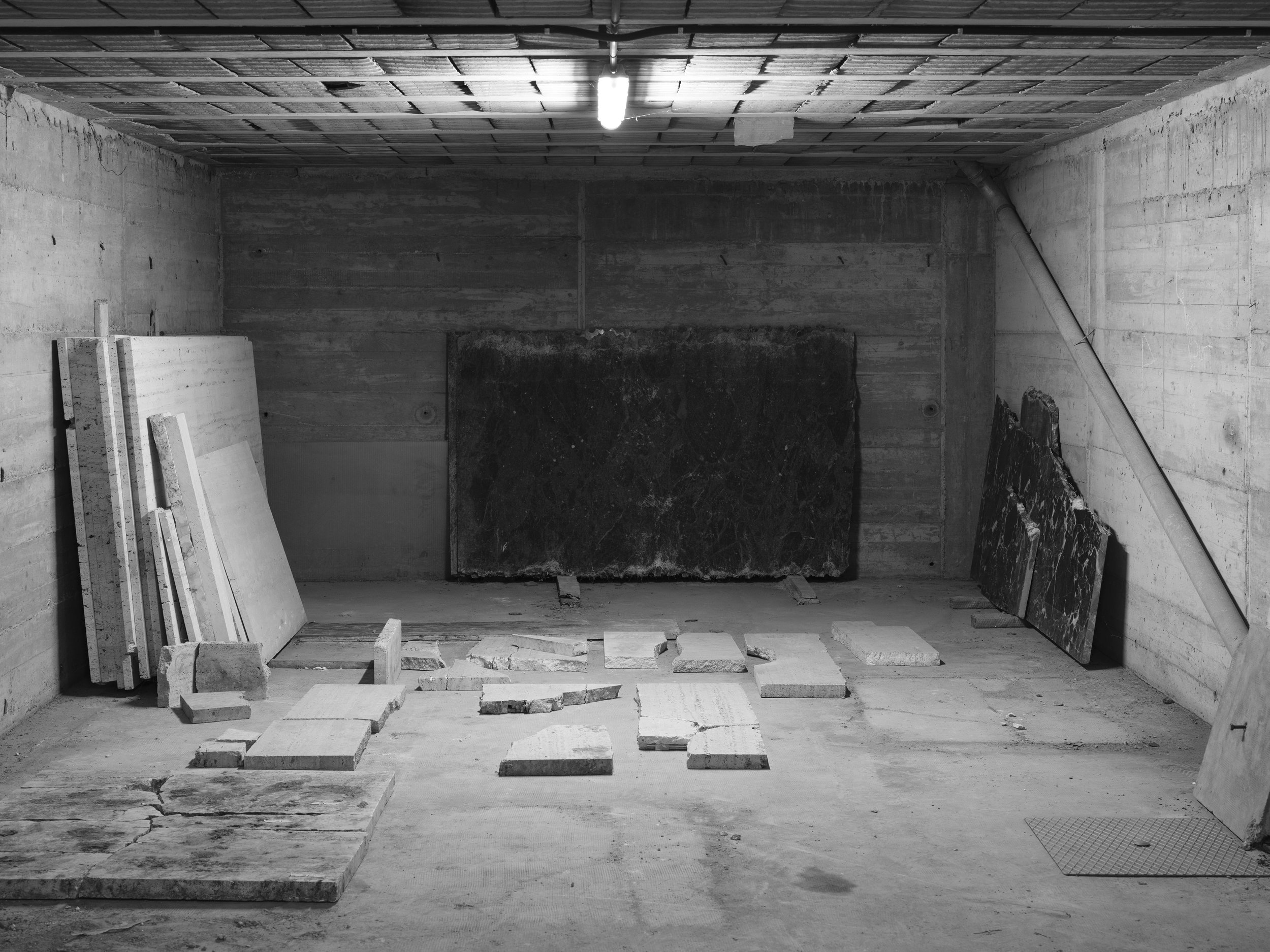
Inviting Life
In collaboration with the Fundació Mies van der Rohe & Stella Rahola Matutes
The Barcelona Pavilion, Spain
Brief
‘Inviting Life’ proposed a re-reading of Ludwig Mies van der Rohe and Lilly Reich’s Pavilion through an exploration of the building’s constituent materials.
Following the project ‘Beautiful Failures’ (2019-2021) – which questioned the fragility and vulnerability of the two most delicate materials of the Pavilion’s construction: glass and travertine – in this second part, we studied the changes that transform materials by natural effects through an exploration of the travertine slabs.
The Pavilion as we know it ultimately aims to obtain a flawless and sterile image. This is partly due to maintenance tasks that eliminate the growth of mosses and lichens on the Pavilion’s stones. The result of this hidden biotope that exists within the building, along with the garden’s dynamic ecosystem, has created an imbalance and tension since the beginning of its conception.

In an aim to shift the image of the Barcelona Pavilion, we carried out a 6-month-long process to physically ‘invite life’ into the premises - this was done through the inoculation of moss on the travertine slabs.
The investigation, process and outcome of this project was then showcased during the week-long exhibition through 12 main interventions in and around the Barcelona Pavilion.
This exhibition is now on show in Shanghai as apart of the SUSAS’23 Exhibition.

1. The Fragment
Broken slab from Beautiful Failures


2. The Carpet
Lithopoliester Travertine Studies














3. The Diary
Logbook of Moss Innoculation


















4. The Slabs
Removed Pavement






5. The Crack
Life Invited
















6. The Tools
Inoculation Process











7. The Tools
Evolution of Untreated Water







8. The Quadrants
Identification of Currounding Microbiota













The Basement










Tour Guide
Guiding visitors through Inviting Life exhibition







Credits
Photography: Aleix Plademunt, Iakovina Syrianou
Videography: Francesca Moroni
